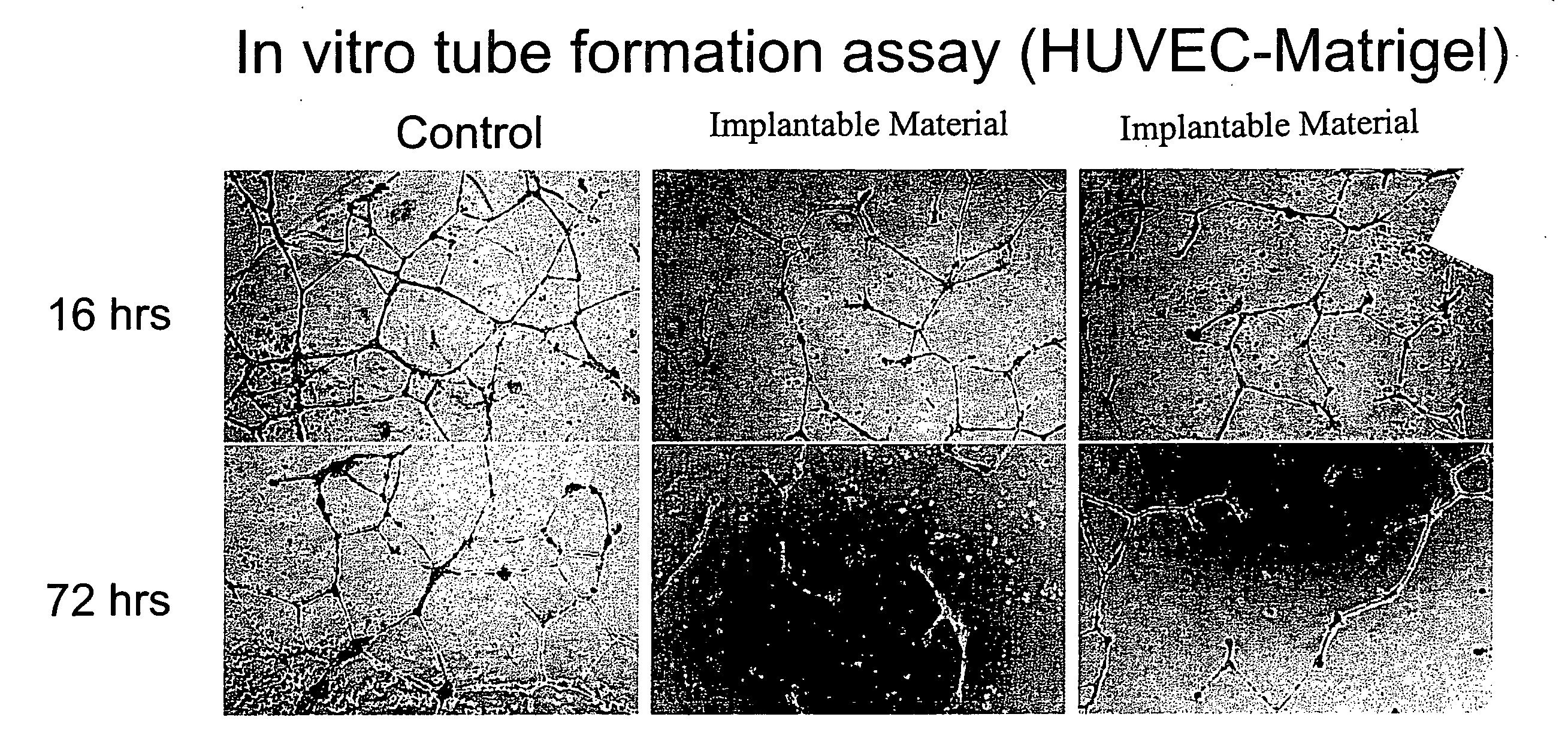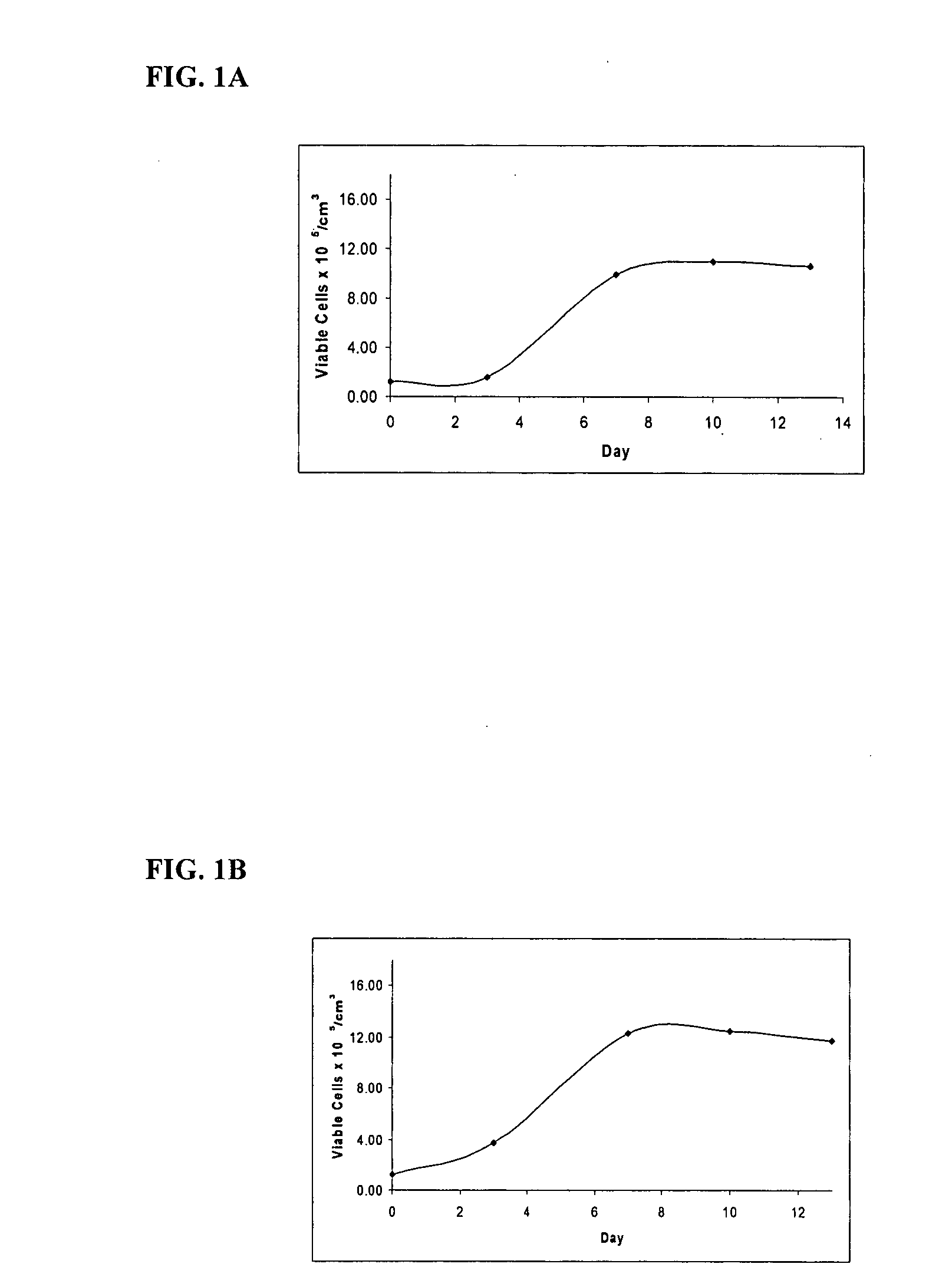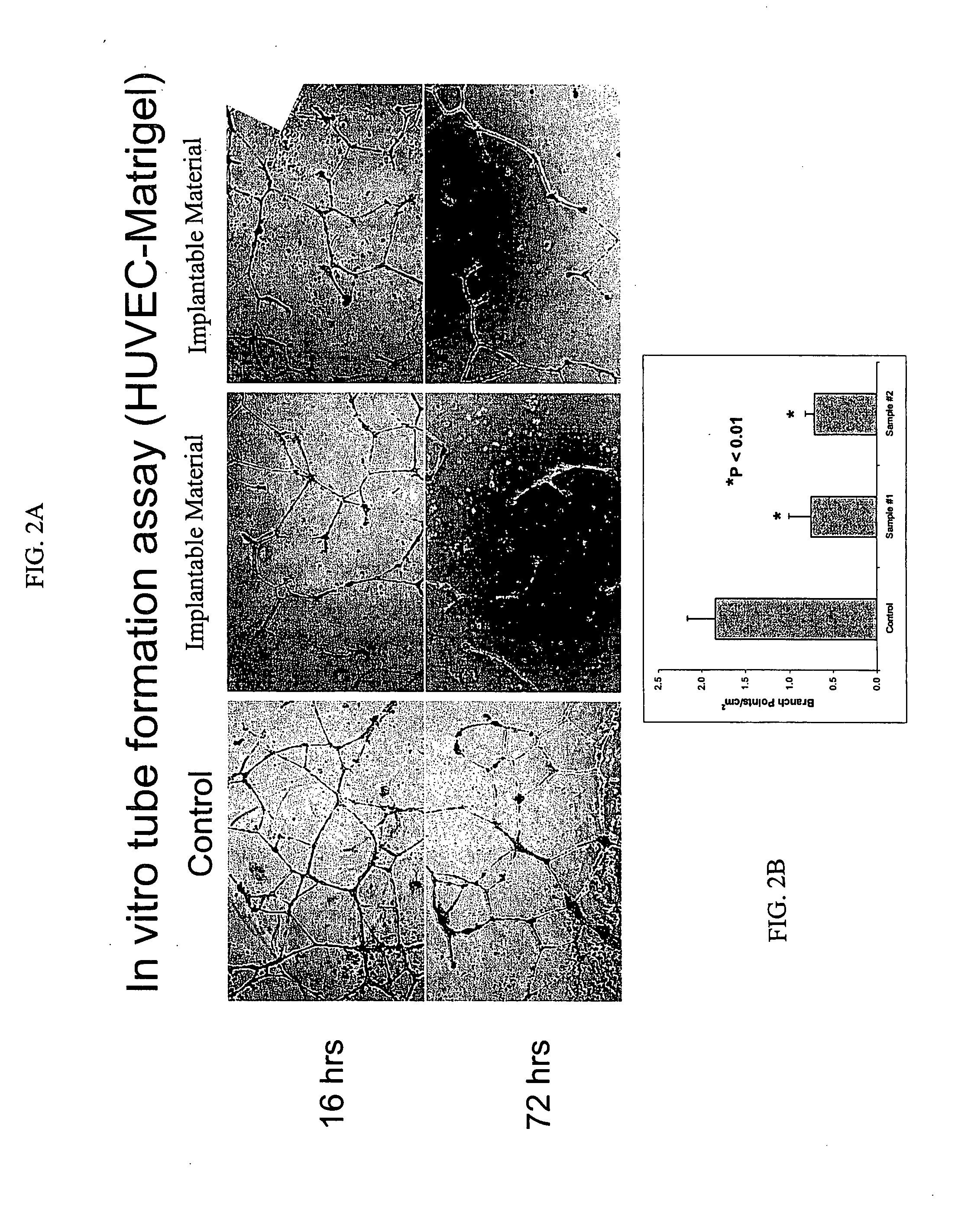Materials and Methods for Treating and Managing Angiogenesis-Mediated Diseases
a technology of angiogenesis and materials, applied in the direction of blood vessels, extracellular fluid disorders, immunological disorders, etc., can solve the problems of subfoveal scar formation and blindness, substantial loss of mobility, and blindness in persons of all ages, so as to prevent, reduce or inhibit abnormal or pathological blood vessel formation, and prevent the growth or regrowth of pathological diseases.
- Summary
- Abstract
- Description
- Claims
- Application Information
AI Technical Summary
Benefits of technology
Problems solved by technology
Method used
Image
Examples
examples
1. Vascular Injury in Pigs
[0146]This study exemplifies use of the present invention's materials and methods to modulate pathological angiogenesis and abnormal neovascularization. The experimental model chosen for such exemplification is neovascularization following vascular injury and trauma induced by surgical intervention. Furthermore, this example provides experimental protocols for testing and using a preferred embodiment of the present invention to reduce or modulate indicia of abnormal neovascularization including neovascularization, vascular density, and expression levels of MMPs following an intervention to a vascular tubular structure, for example, introduction of an AV graft, in animal test subjects.
[0147]Using standard surgical procedures, an AV graft was created between the carotid artery and the jugular vein. Implantable material was then disposed in the perivascular space adjacent to each surgically created AV graft anastomosis; the details of one exemplary procedure a...
PUM
 Login to View More
Login to View More Abstract
Description
Claims
Application Information
 Login to View More
Login to View More - R&D
- Intellectual Property
- Life Sciences
- Materials
- Tech Scout
- Unparalleled Data Quality
- Higher Quality Content
- 60% Fewer Hallucinations
Browse by: Latest US Patents, China's latest patents, Technical Efficacy Thesaurus, Application Domain, Technology Topic, Popular Technical Reports.
© 2025 PatSnap. All rights reserved.Legal|Privacy policy|Modern Slavery Act Transparency Statement|Sitemap|About US| Contact US: help@patsnap.com



